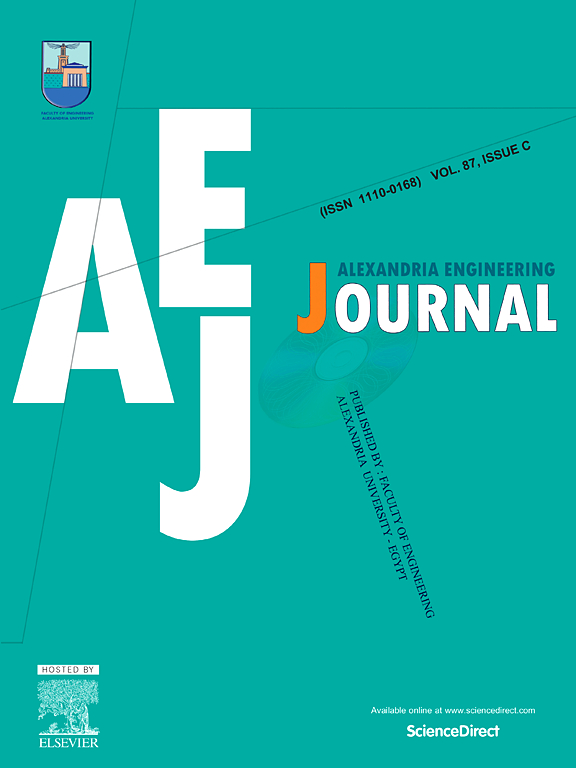Mechanisms of asiaticoside in keloid treatment: Insights from a single-cell transcriptomic approach combined with network pharmacological analysis
IF 6.8
2区 工程技术
Q1 ENGINEERING, MULTIDISCIPLINARY
引用次数: 0
Abstract
This work sought to clarify the molecular processes through which asiaticoside operates in treating keloid by utilizing an integrated approach employing scRNA-seq and systems pharmacological methods. We performed scRNA-seq on three patients' keloid and adjacent normal skin samples. We detected 1500 highly variable genes and further examined them using PCA and tSNE techniques. Drug targets of asiaticoside were predicted through multiple databases, and overlapping genes with keloid-related cell types (macrophages and keloid fibroblasts (KFs)) were analyzed. GO and KEGG enrichment evaluations were performed, followed by in vitro assays to confirm the influence of asiaticoside on macrophage and keloid fibroblast. scRNA-seq revealed significant cellular heterogeneity between keloid and adjacent tissue, with macrophages and KFs identified as major contributors to its pathogenesis. Network pharmacology identified NF-κB, PI3K-Akt signaling, etc., through which asiaticoside exerts its anti-inflammatory and anti-fibrotic effects. In vitro studies confirmed that asiaticoside inhibited macrophage activation and reduced the pro-fibrotic effects of macrophage on KF. Our study demonstrates asiaticoside alleviates keloid by modulating macrophage function and KF activity through NF-κB and PI3K-Akt signaling. These findings provide a novel mechanistic understanding of asiaticoside’s therapeutic effects and offer insights into its clinical application.
积雪草苷治疗瘢痕疙瘩的机制:单细胞转录组学方法结合网络药理学分析的见解
本研究旨在通过采用scRNA-seq和系统药理学方法的综合方法,阐明积雪草苷治疗瘢痕疙瘩的分子过程。我们对三名患者的瘢痕疙瘩和邻近的正常皮肤样本进行了scrna测序。我们检测到1500个高度可变的基因,并使用PCA和tSNE技术进一步检测它们。通过多个数据库预测积雪草苷的药物靶点,并分析与瘢痕疙瘩相关细胞类型(巨噬细胞和瘢痕疙瘩成纤维细胞(KFs))重叠的基因。进行GO和KEGG富集评价,然后进行体外实验,确认积雪草苷对巨噬细胞和瘢痕疙瘩成纤维细胞的影响。scRNA-seq显示瘢痕疙瘩和邻近组织之间存在显著的细胞异质性,巨噬细胞和KFs被认为是其发病机制的主要因素。网络药理学鉴定出NF-κB、PI3K-Akt等信号通路,积雪草苷通过这些信号通路发挥抗炎、抗纤维化作用。体外实验证实,积雪草苷抑制巨噬细胞活化,降低巨噬细胞对KF的促纤维化作用。我们的研究表明积雪草苷通过NF-κB和PI3K-Akt信号通路调节巨噬细胞功能和KF活性,从而缓解瘢痕疙瘩。这些发现为积雪草苷的治疗作用提供了新的机制理解,并为其临床应用提供了见解。
本文章由计算机程序翻译,如有差异,请以英文原文为准。
求助全文
约1分钟内获得全文
求助全文
来源期刊

alexandria engineering journal
Engineering-General Engineering
CiteScore
11.20
自引率
4.40%
发文量
1015
审稿时长
43 days
期刊介绍:
Alexandria Engineering Journal is an international journal devoted to publishing high quality papers in the field of engineering and applied science. Alexandria Engineering Journal is cited in the Engineering Information Services (EIS) and the Chemical Abstracts (CA). The papers published in Alexandria Engineering Journal are grouped into five sections, according to the following classification:
• Mechanical, Production, Marine and Textile Engineering
• Electrical Engineering, Computer Science and Nuclear Engineering
• Civil and Architecture Engineering
• Chemical Engineering and Applied Sciences
• Environmental Engineering
 求助内容:
求助内容: 应助结果提醒方式:
应助结果提醒方式:


